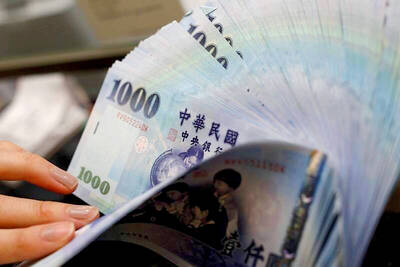In December, Johnny Chung Lee, then a doctoral candidate, posted a five-minute video on YouTube that became an Internet sensation.
The video showed how, in a few easy steps, the Nintendo Wii remote controller — or “Wiimote” — could transform a normal video screen into a virtual reality display, with graphics that seemed to pop through the screen and into the living room. So far, the video has been seen more than 6 million times.
That video, together with others that Lee, now 28, posted on YouTube, have drawn people to the innovator as well as his innovations. Video game companies have contacted him and, last month, MIT’s Technology Review named him as one of its top innovators under 35.
When he completed his degree this year at the Human-Computer Interaction Institute of Carnegie Mellon, he received “lots of offers from all the big places,” according to Paul Dietz, who convinced Lee to join him in the applied sciences group of Microsoft’s entertainment and devices division.
“When we told Bill Gates we were trying to recruit Johnny, he already knew about his work and was anxious to bring him to Microsoft,” said Dietz, a research and development program manager.
Contrast this with what might have followed from other options Lee considered for communicating his ideas. He might have published a paper that only a few dozen specialists would have read. A talk at a conference would have brought a slightly larger audience. In either case, it would have taken months for his ideas to reach others.
Small wonder, then, that he maintains that posting to YouTube has been an essential part of his success as an inventor.
“Sharing an idea the right way is just as important as doing the work itself,” he said. “If you create something but nobody knows, it’s as if it never happened.”
Before posting his own ideas, Lee watched other people’s videos about the Wiimote. An online community of electronics hobbyists share ideas in video form not only on YouTube, but also at sites like instructables.com and makezine.com.
Thirty years ago, pioneers of the personal computer industry swapped ideas and tried to outdo one another at meetings of the Homebrew Computer Club in an auditorium at Stanford University. Today, these “meetings” happen virtually and globally, with people modifying, improving and otherwise riffing on one another’s ideas — then posting the results in video form. This wide-scale collaboration, Lee said, lets the hobbyists “take advantage of economies of scale of innovation.”
In late 2002, Lee started a small company to build and sell an invention that helps filmmakers minimize camera-shaking. He sells this “Poor Man’s Steadycam” for US$39.95 online — commercial versions start at five times that price — though he encourages people to download free instructions from his Web site and to build the device themselves for US$14 in parts.
Lee said that the company is profitable, with revenue of about US$250,000 in its first five years, but he added that he is not much of a businessman. He has been out of inventory for more than a year.
The steadycam company is his only foray into business. Lee’s decision to share, rather than sell, most of his ideas is linked to his definition of success, which he measures in terms of impact, not dollars. This, he said, is a reason he chose to join Microsoft: The company’s enormous customer base represents “real potential to help other people.”
Lee chooses his personal projects based on what he calls their “work-to-wow” ratio.
“I want to get the biggest wow for the smallest amount of work,” he explained, adding that for him, “wow” is synonymous with impact.
The ratio of the Wiimote projects was fantastic. Each idea that has reached millions of people took only three to four days to conceive, build, film and post.
Lee encourages innovators to ask themselves, “Would providing 80 percent of the capability at 1 percent of the cost be valuable to someone?”
If the answer is yes, he said, pay attention. Trading relatively little performance for substantial cost savings can generate what Lee calls “surprising and often powerful results both scientifically and socially.”
As evidence, he might point to a do-it-yourself interactive whiteboard, another of his Wiimote innovations. Interactive whiteboards, which in commercial form generally sell for more than US$1,000, make it possible to control a computer by tapping, writing or drawing on an image of the desktop that has been projected onto a screen. Lee’s version can be built with roughly US$60 in parts and free open-source software downloadable from his Web site.
Some 700,000 people, many of them teachers, have downloaded the software, Lee said. Much more expensive whiteboards may offer more features and better image resolution, but Lee’s version is adequate for most classroom applications.
It is also easy to build.
An after-school Lego robotics club for fifth-graders at Clara Byrd Baker Elementary School in Williamsburg, Virginia, built a Wiimote whiteboard in four one-hour sessions.
“Once it was done, the kids were so excited,” recalled Kofi Merritt, then the school’s computer resource specialist, who suggested and advised the project. “They recognized themselves as innovators and demonstrated the whiteboard in classroom after classroom.”
Lee’s ideas have acquired a momentum independent of Lee himself. At educational conferences, teachers have presented how-to tutorials for their colleagues. And at Microsoft, his appreciation for online video has rubbed off on others.
The company gave Dietz permission to go public with a new invention of his own: a drinking glass that, when placed on the Microsoft Surface table — a table with an interactive, multitouch display built into the top — alerts a waiter to offer a refill.
After writing a paper on his invention, Dietz wanted to test the concept in the market. His first step? He posted a video on YouTube.

Merida Industry Co (美利達) has seen signs of recovery in the US and European markets this year, as customers are gradually depleting their inventories, the bicycle maker told shareholders yesterday. Given robust growth in new orders at its Taiwanese factory, coupled with its subsidiaries’ improving performance, Merida said it remains confident about the bicycle market’s prospects and expects steady growth in its core business this year. CAUTION ON CHINA However, the company must handle the Chinese market with great caution, as sales of road bikes there have declined significantly, affecting its revenue and profitability, Merida said in a statement, adding that it would

i Gasoline and diesel prices at fuel stations are this week to rise NT$0.1 per liter, as tensions in the Middle East pushed crude oil prices higher last week, CPC Corp, Taiwan (台灣中油) and Formosa Petrochemical Corp (台塑石化) said yesterday. International crude oil prices last week rose for the third consecutive week due to an escalating conflict between Israel and Iran, as the market is concerned that the situation in the Middle East might affect crude oil supply, CPC and Formosa said in separate statements. Front-month Brent crude oil futures — the international oil benchmark — rose 3.75 percent to settle at US$77.01

RISING: Strong exports, and life insurance companies’ efforts to manage currency risks indicates the NT dollar would eventually pass the 29 level, an expert said The New Taiwan dollar yesterday rallied to its strongest in three years amid inflows to the nation’s stock market and broad-based weakness in the US dollar. Exporter sales of the US currency and a repatriation of funds from local asset managers also played a role, said two traders, who asked not to be identified as they were not authorized to speak publicly. State-owned banks were seen buying the greenback yesterday, but only at a moderate scale, the traders said. The local currency gained 0.77 percent, outperforming almost all of its Asian peers, to close at NT$29.165 per US dollar in Taipei trading yesterday. The

RECORD LOW: Global firms’ increased inventories, tariff disputes not yet impacting Taiwan and new graduates not yet entering the market contributed to the decrease Taiwan’s unemployment rate last month dropped to 3.3 percent, the lowest for the month in 25 years, as strong exports and resilient domestic demand boosted hiring across various sectors, the Directorate-General of Budget, Accounting and Statistics (DGBAS) said yesterday. After seasonal adjustments, the jobless rate eased to 3.34 percent, the best performance in 24 years, suggesting a stable labor market, although a mild increase is expected with the graduation season from this month through August, the statistics agency said. “Potential shocks from tariff disputes between the US and China have yet to affect Taiwan’s job market,” Census Department Deputy Director Tan Wen-ling